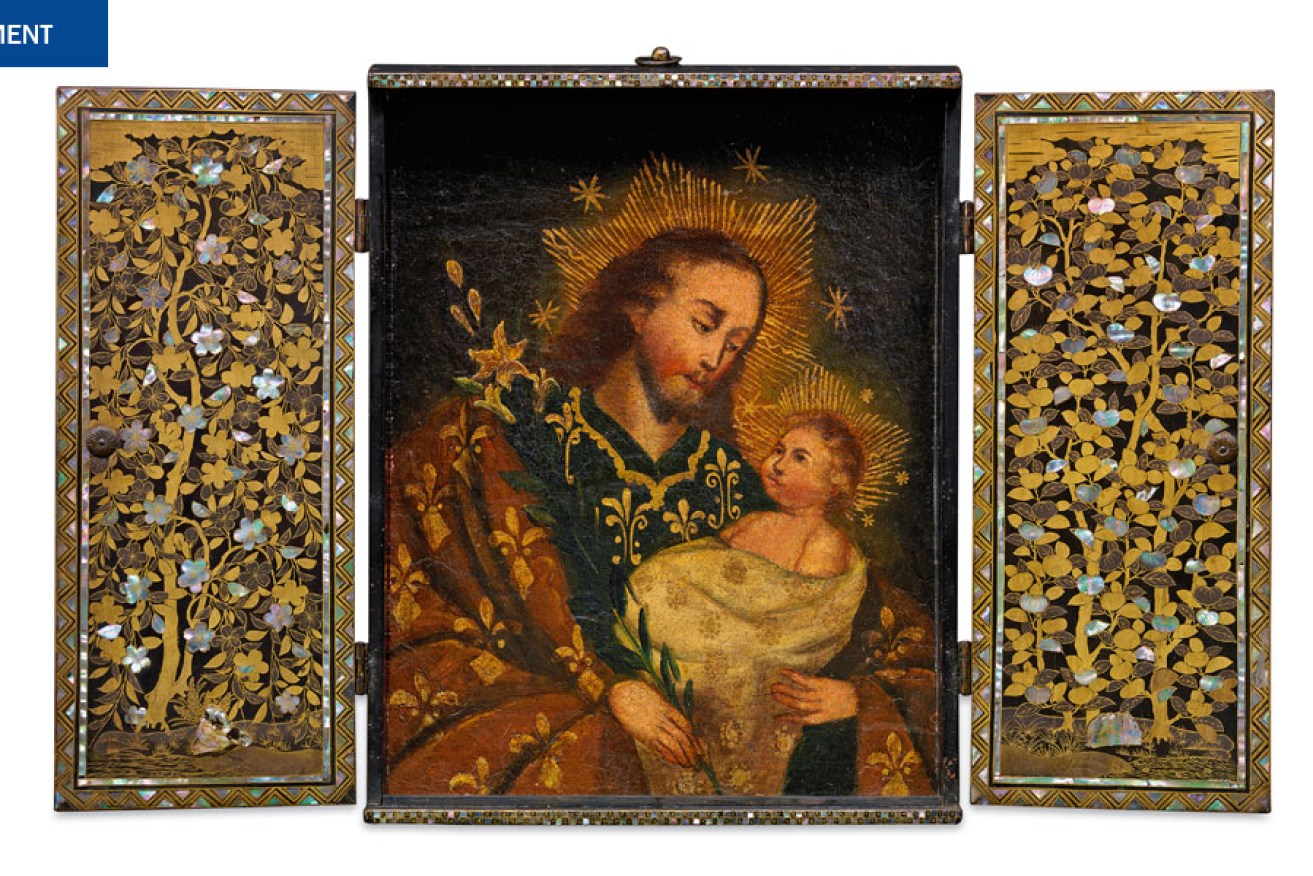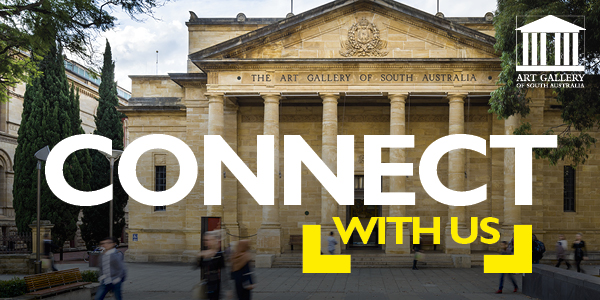Treasure Ships: Art in the Age of Spices

Japan, Portable altarpiece, with devotional image, late 16th–early 17th centuries, wood, urushi lacquer, gold lacquer, mother-of-pearl and gilt copper (fittings), pigment on wood (painting), 37.5 x 29.2 x 5.1 cm; Museu do Oriente/Fundação Oriente, Lisbon, Portugal, FO/0636. photo: Hugo Maertens/BNP Paribas
Portuguese sailors landing in southern India in 1498 uttered the famous line ‘We come in search of Christians and spices’, reflecting Europe’s mercantile and ecclesiastical concerns in Asia. The Portuguese were not the first Christians in Asia as it is believed that Thomas the Apostle travelled outside Rome as far as India to preach the Gospel.
For the first time at the Art Gallery of South Australia, a diverse range of works on loan from India and Portugal, created by Asian artists, for a Christian context are on display in Treasure Ships: Art in the Age of Spices. The spice age is noted for the diversity of religious imagery created by artists at ports such as Goa and Nagasaki, which portray the confluence of European and Asian aesthetics. Asian artisans, both Christian and non-Christian, crafted beautiful objects for liturgical and devotional use, drawing from European and indigenous styles, which could transcend the limits of language.
This is the first exhibition in Australia to present the complex artistic and cultural interactions between the East and the West from the 16th to the 19th centuries – a period known as the ‘Age of Spices.’
The exhibition presents almost 300 rarely seen objects, including ceramics, decorative arts, paintings, prints and textiles. The objects come from public and private collections in Australia, India, Portugal, Singapore and the United States.
Among them is a reliquary monstrance displaying a thorn from the Crown of Christ, formerly housed in the Basilica of Baby Jesus, Old Goa, where the body of St Francis Xavier still lies. This reliquary is shaped in the form of a monstrance, with a glass phial containing the thorn, from the crown of Christ in place of the Holy Host.
Other religious art works in the exhibition include a 17th century reliquary casket which holds a fragment of the robe of St Francis Xavier from Museum of Christian Art in Old Goa. The exhibition also includes a silver cross and crab from the National Museum Machado de Castro, which portrays one of the most celebrated moments in the life of St Francis Xavier, the apostle of the Indies, when a crab returned his lost cross to him on the beaches of Indonesia.
Don’t miss this rare chance to see Christian Relics from the 16th to the 19th centuries.
13 June – 30 August 2015
Art Gallery of South Australia
Tickets available now www.treasureships.com.au
To find out what else is going on at the Art Gallery of South Australia and to Connect to exclusive special offers and competitions, sign up for the Gallery’s Connect eNews





